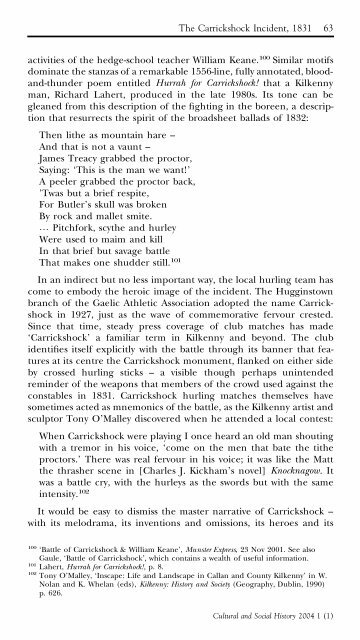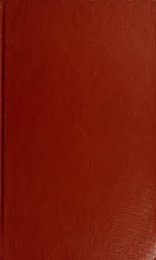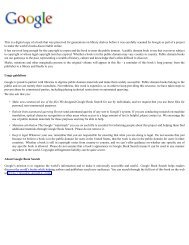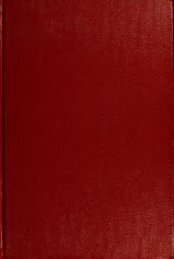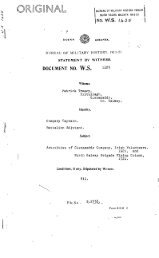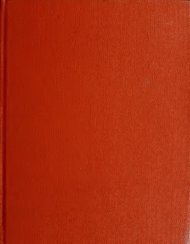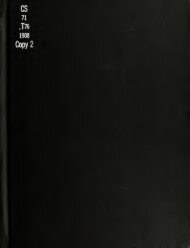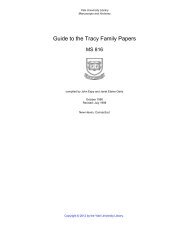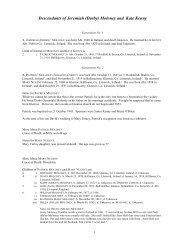The Carrickshock Incident, 1831: Social Memory and an Irish cause ...
The Carrickshock Incident, 1831: Social Memory and an Irish cause ...
The Carrickshock Incident, 1831: Social Memory and an Irish cause ...
You also want an ePaper? Increase the reach of your titles
YUMPU automatically turns print PDFs into web optimized ePapers that Google loves.
<strong>The</strong> <strong>Carrickshock</strong> <strong>Incident</strong>, <strong>1831</strong> 63<br />
activities of the hedge-school teacher William Ke<strong>an</strong>e. 100 Similar motifs<br />
dominate the st<strong>an</strong>zas of a remarkable 1556-line, fully <strong>an</strong>notated, blood<strong><strong>an</strong>d</strong>-thunder<br />
poem entitled Hurrah for <strong>Carrickshock</strong>! that a Kilkenny<br />
m<strong>an</strong>, Richard Lahert, produced in the late 1980s. Its tone c<strong>an</strong> be<br />
gle<strong>an</strong>ed from this description of the ghting in the boreen, a description<br />
that resurrects the spirit of the broadsheet ballads of 1832:<br />
<strong>The</strong>n lithe as mountain hare –<br />
And that is not a vaunt –<br />
James Treacy grabbed the proctor,<br />
Saying: ‘This is the m<strong>an</strong> we w<strong>an</strong>t!’<br />
A peeler grabbed the proctor back,<br />
’Twas but a brief respite,<br />
For Butler’s skull was broken<br />
By rock <strong><strong>an</strong>d</strong> mallet smite.<br />
% Pitchfork, scythe <strong><strong>an</strong>d</strong> hurley<br />
Were used to maim <strong><strong>an</strong>d</strong> kill<br />
In that brief but savage battle<br />
That makes one shudder still. 101<br />
In <strong>an</strong> indirect but no less import<strong>an</strong>t way, the local hurling team has<br />
come to embody the heroic image of the incident. <strong>The</strong> Hugginstown<br />
br<strong>an</strong>ch of the Gaelic Athletic Association adopted the name <strong>Carrickshock</strong><br />
in 1927, just as the wave of commemorative fervour crested.<br />
Since that time, steady press coverage of club matches has made<br />
‘<strong>Carrickshock</strong>’ a familiar term in Kilkenny <strong><strong>an</strong>d</strong> beyond. <strong>The</strong> club<br />
identi es itself explicitly with the battle through its b<strong>an</strong>ner that features<br />
at its centre the <strong>Carrickshock</strong> monument, <strong>an</strong>ked on either side<br />
by crossed hurling sticks – a visible though perhaps unintended<br />
reminder of the weapons that members of the crowd used against the<br />
constables in <strong>1831</strong>. <strong>Carrickshock</strong> hurling matches themselves have<br />
sometimes acted as mnemonics of the battle, as the Kilkenny artist <strong><strong>an</strong>d</strong><br />
sculptor Tony O’Malley discovered when he attended a local contest:<br />
When <strong>Carrickshock</strong> were playing I once heard <strong>an</strong> old m<strong>an</strong> shouting<br />
with a tremor in his voice, ‘come on the men that bate the tithe<br />
proctors.’ <strong>The</strong>re was real fervour in his voice; it was like the Matt<br />
the thrasher scene in [Charles J. Kickham’s novel] Knocknagow. It<br />
was a battle cry, with the hurleys as the swords but with the same<br />
intensity. 102<br />
It would be easy to dismiss the master narrative of <strong>Carrickshock</strong> –<br />
with its melodrama, its inventions <strong><strong>an</strong>d</strong> omissions, its heroes <strong><strong>an</strong>d</strong> its<br />
100 ‘Battle of <strong>Carrickshock</strong> & William Ke<strong>an</strong>e’, Munster Express, 23 Nov 2001. See also<br />
Gaule, ‘Battle of <strong>Carrickshock</strong>’, which contains a wealth of useful information.<br />
101 Lahert, Hurrah for <strong>Carrickshock</strong>!, p. 8.<br />
102 Tony O’Malley, ‘Inscape: Life <strong><strong>an</strong>d</strong> L<strong><strong>an</strong>d</strong>scape in Call<strong>an</strong> <strong><strong>an</strong>d</strong> County Kilkenny’ in W.<br />
Nol<strong>an</strong> <strong><strong>an</strong>d</strong> K. Whel<strong>an</strong> (eds), Kilkenny: History <strong><strong>an</strong>d</strong> Society (Geography, Dublin, 1990)<br />
p. 626.<br />
Cultural <strong><strong>an</strong>d</strong> <strong>Social</strong> History 2004 1 (1)


